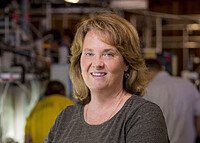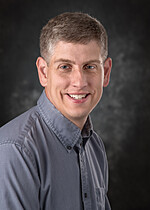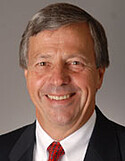SARS-CoV-2, the virus that causes COVID-19, is primarily transmitted by droplets and tiny aerosols which are emitted when breathing, talking, yelling, and singing. Small aerosols can travel long distances indoors and remain suspended for hours. With the emergence of the highly contagious delta variant, top aerosol experts are urging schools more than ever to improve ventilation and filtration to reduce the viral load indoors as part of the layered mitigation approach to minimize COVID-19 transmission risk. Implementing science-based measures that integrate indoor air quality (IAQ) control strategies to reduce the risk of SARS CoV-2 infection also has the added long-term benefits of improving students, staff, and teachers' physical environments, which promotes learning and overall health. Studies have shown that students’ test scores increase with improved IAQ. [1] These measures also help reduce the spread of other infectious diseases and minimizes absences. [2].
Challenges in reducing airborne transmission of SARS-CoV-2
Dr. Kim Prather opened the webinar with a discussion of the evidence supporting airborne transmission of the SARS-CoV-2 virus that causes COVID-19. Dr. Prather discussed how this virus has silently spread about the global and why acknowledging the mode of transmission is critical to reducing the spread of the virus. She also discussed steps taken to safely open the San Diego school district and the long term benefits of improving indoor air quality.
Reducing Aerosol Transmission Risk in the Classroom: Using CO2 as a Ventilation Clue.
The science has demonstrated that risk reduction for COVID-19 transmission in classrooms specifically includes implementing masks, increased spacing, outdoor breaks, upgraded filtration, and improved ventilation. Increasing ventilation will reduce the buildup of virus containing particles in the classroom, thereby reducing the chance of long range transmission from occurring. Pre-pandemic, many classrooms did not meet standard ventilation guidelines, let alone recommended enhanced COVID-19 ventilation guidelines, due to energy concerns or malfunction equipment. People emit carbon dioxide (CO2) as we breathe, and CO2 concentrations build up in poorly ventilated spaces. During this talk, Dr. Dustin Poppendieck discussed how CO2 concentrations can be used to quickly estimate ventilation effectiveness to find poorly ventilated classrooms and the challenges in assessing and interpreting CO2 readings from classrooms.
Using Air Filters and Air Cleaners to Reduce Covid-19 Risk in Schools
During Jim Rosenthal’s talk, he focused on ways that schools can use air filters and stand-alone air cleaners to help provide a safer environment for students and teachers. This discussion will cover current recommendations for air filter efficiency and show how to maximize air filter effectiveness and reduce COVID-19 transmission risk indoors. Dr. Rothenthal also addressed the issues of how to select and use additional air cleaners including the DIY Corsi/Rosenthal Box.
Featured Speakers
 Kimberly A. Prather is the Distinguished Chair in Atmospheric Chemistry and Distinguished Professor at Scripps Institution of Oceanography and the Department of Chemistry and Biochemistry at University of California, San Diego.
Kimberly A. Prather is the Distinguished Chair in Atmospheric Chemistry and Distinguished Professor at Scripps Institution of Oceanography and the Department of Chemistry and Biochemistry at University of California, San Diego.
Over the course of her career, Professor Prather has authored over 220 publications in a wide range of prestigious scientific journals. Professor Prather invented a technique known as aerosol time- of-flight mass spectrometry (ATOFMS) that allows one to directly measure for the first time the atmospheric evolution of aerosol particles. This instrument is being used in atmospheric field studies and flown through clouds worldwide to determine the major sources of atmospheric aerosols which are impacting human health, air quality, and climate. An area of focus of her researchinvolvesunderstandinghowaerosolsimpactclimate,withamajoremphasisontheirrole in modifying climate, air quality, and human health. Her group has been investigating thesources of airborne viruses such as SARS-CoV-2 and the impacts on humanhealth.
During the COVID-19 pandemic, Professor Prather has been extremely active in science communication related to the airborne transmission of SARS-CoV-2. She has been a major spokesperson conducting thousands of media interviews that have led to the implementation of measures to protect against the spread of this airborne virus and end this pandemic. She has been involved as an expert helping develop a safe plan for reopening San Diego Unified School district and the UC San Diego Return to Learn program.
 Dustin Poppendieck received his PhD in Civil and Environmental Engineering from the University of Texas at Austin in 2002. He has been investigating indoor air chemistry since 2002 and has been a research engineer in the Indoor Air Quality and Ventilation Group at the National Institute of Standards and Technology (NIST) since 2012. Most of Dustin’s efforts have involved characterizing primary emission sources and heterogenous reactions at material surfaces. He has investigated emissions from kerosene can lamps used by nearly a billion people throughout the developing world, spray polyurethane foam, and non-smoldering cigarette butts. In addition, Dustin has studied the disinfection of biologically contaminated building materials (i.e., anthrax) using high concentrations of ozone, chlorine dioxide, hydrogen peroxide and methyl bromide.
Dustin Poppendieck received his PhD in Civil and Environmental Engineering from the University of Texas at Austin in 2002. He has been investigating indoor air chemistry since 2002 and has been a research engineer in the Indoor Air Quality and Ventilation Group at the National Institute of Standards and Technology (NIST) since 2012. Most of Dustin’s efforts have involved characterizing primary emission sources and heterogenous reactions at material surfaces. He has investigated emissions from kerosene can lamps used by nearly a billion people throughout the developing world, spray polyurethane foam, and non-smoldering cigarette butts. In addition, Dustin has studied the disinfection of biologically contaminated building materials (i.e., anthrax) using high concentrations of ozone, chlorine dioxide, hydrogen peroxide and methyl bromide.
 Jim Rosenthal is the Chairman and Chief Executive Officer of Air Relief Technologies, Inc. which is the parent company of Tex-Air Filters, Allergy Clean Environments and Allergy, Air & More. He has over 20 years of experience in the air filtration and environmental control industries and has been active in the National Air Filtration Association (NAFA) – serving as its President in 2009-2010. He is a Certified Air Filter Specialist (CAFS) by NAFA. He was also President of the Asthma and Allergy Foundation of America – Texas Chapter from 1998 to 2013. He is also involved in air filter test standards and is currently a voting member of the ASHRAE 52.2 Committee
Jim Rosenthal is the Chairman and Chief Executive Officer of Air Relief Technologies, Inc. which is the parent company of Tex-Air Filters, Allergy Clean Environments and Allergy, Air & More. He has over 20 years of experience in the air filtration and environmental control industries and has been active in the National Air Filtration Association (NAFA) – serving as its President in 2009-2010. He is a Certified Air Filter Specialist (CAFS) by NAFA. He was also President of the Asthma and Allergy Foundation of America – Texas Chapter from 1998 to 2013. He is also involved in air filter test standards and is currently a voting member of the ASHRAE 52.2 Committee
Jim has given over 50 presentations and training seminars on air filtration and indoor air quality. He has presented for the Air Conditioning Contractors of America (ACCA), RSES, the National Air Duct Cleaning Association (NADCA), NAFA, the Indoor Air Quality Association, the International Filtration and Separations Society and numerous colleges and junior colleges.
He is also a frequent contributor of articles on air filtration, indoor air chemistry and indoor air quality to national trade journals and technical journals. His articles have appeared in Indoor Environment Connections, Air Media, RSES Journal and the Journal of Indoor Air.
This webinar was moderated by Karen Wang, PhD, director of CHE. It lasted for 60 minutes and was recorded for our call and webinar archive.
